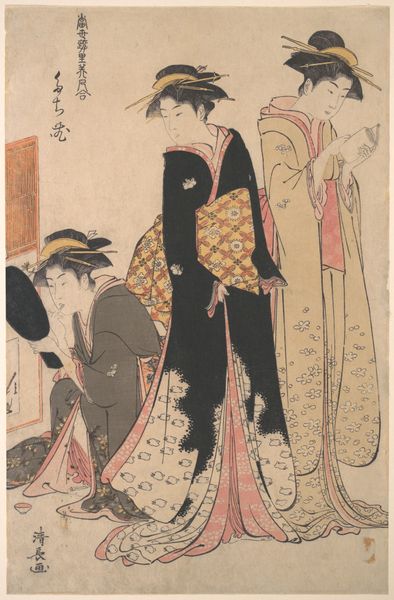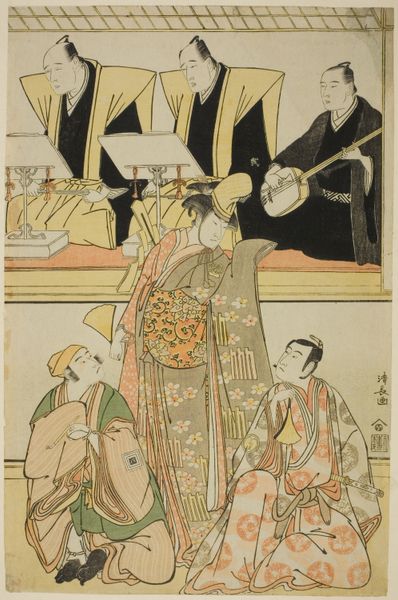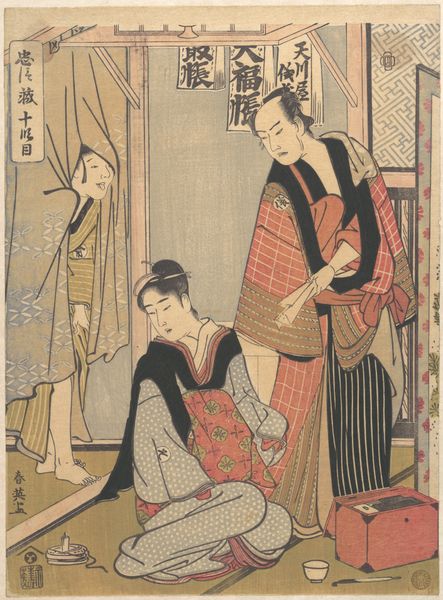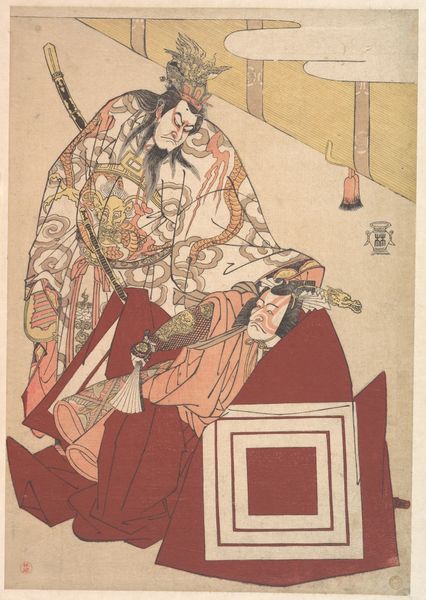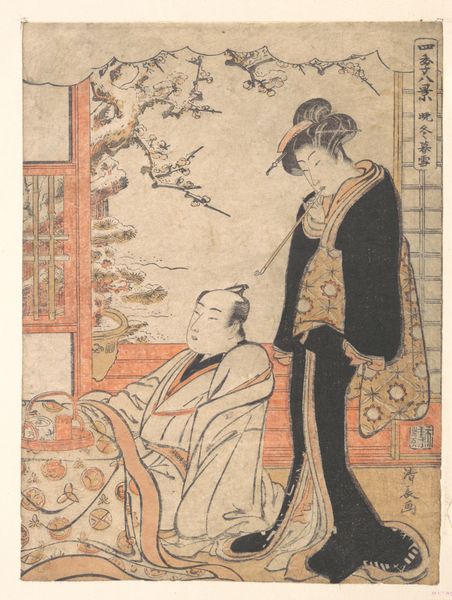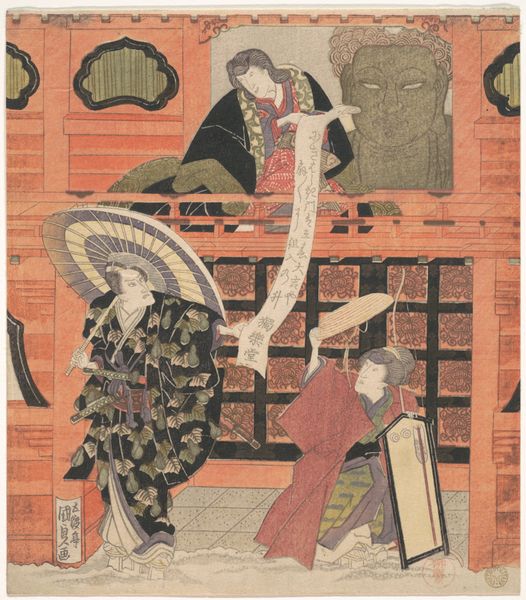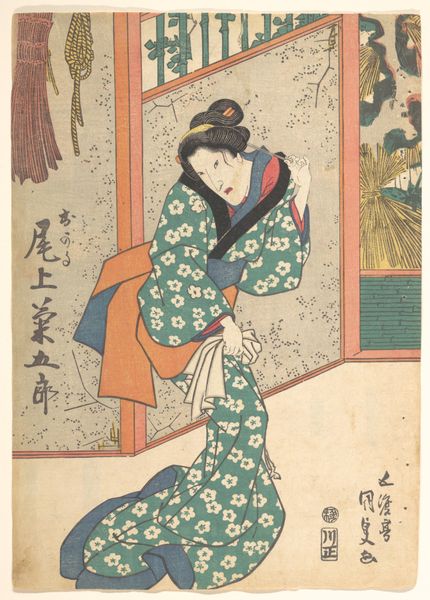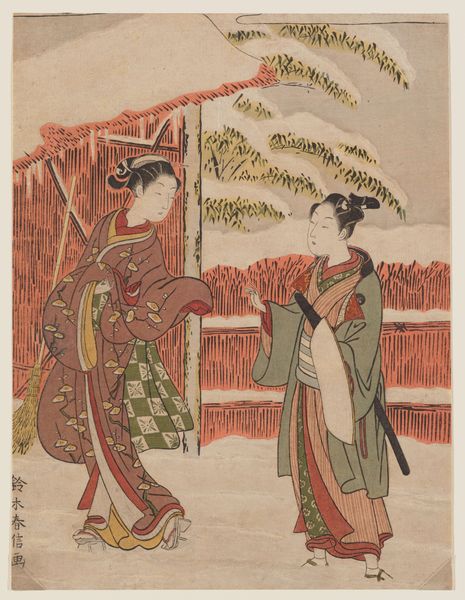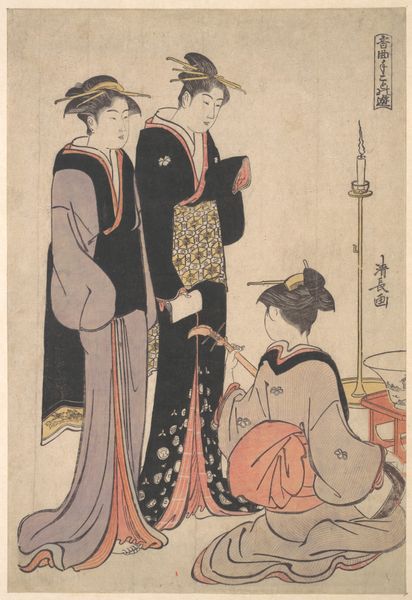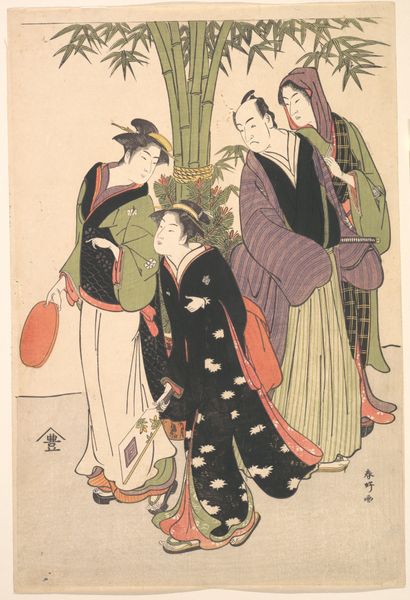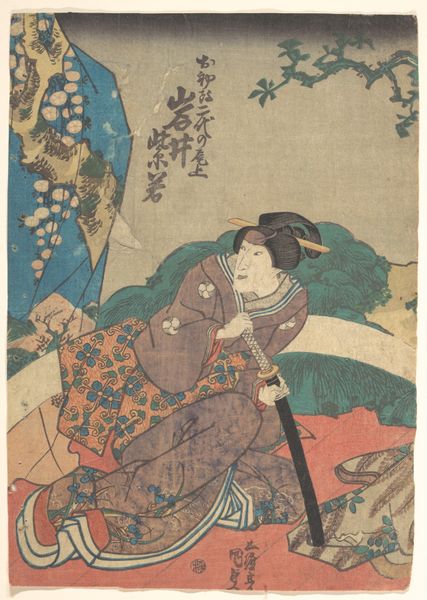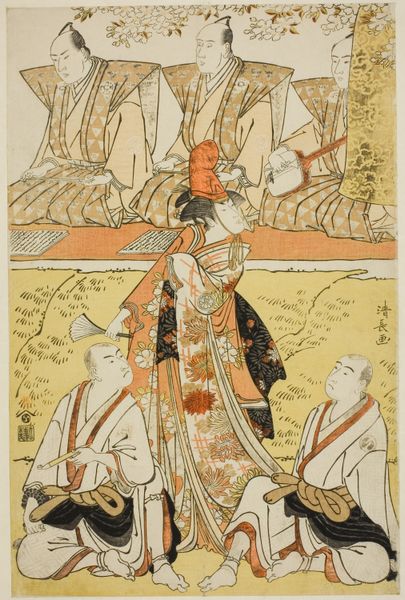
print, woodblock-print
#
portrait
# print
#
asian-art
#
ukiyo-e
#
figuration
#
woodblock-print
Dimensions: H. 15 1/8 in. (38.4 cm); W. 10 in. (25.4 cm)
Copyright: Public Domain
Curator: Welcome. Today, we'll be discussing "Two Women Standing, Holding a Child," a woodblock print from around 1775 to 1795, created by Torii Kiyonaga. Editor: It strikes me as very poised, yet intimate. The figures fill the frame with elegant patterns. I’m particularly drawn to the woman kneeling by what appears to be a brazier. Curator: Ukiyo-e prints like this were products of their time, offering a glimpse into the leisurely activities of urban life in the Edo period. Notice how Kiyonaga arranges the figures, with the two standing women as pillars of stability, framing the scene, with the child as this innocent focal point. Editor: Absolutely, but what about the production itself? Woodblock printing involved a collaboration of artisans: the artist, the carver, the printer. These were often mass-produced, accessible forms of art. This print has an incredible amount of detail with so many colors; the amount of work, coordination, and even access to pigment speaks to the consumption habits of this era. Curator: Precisely! And that access informs what the imagery represents: fashion, social status, the ephemeral beauty that defines the Ukiyo-e aesthetic. Think about the symbolism embedded within the women's kimono. Their layered robes and refined accessories echo Confucian virtues. Editor: But they're also consumers themselves, active agents within the economic landscape, aren't they? Curator: Indeed! The print is also telling us stories about social norms. The placement of the child suggests a focus on continuity and tradition, a kind of aspirational depiction of ideal motherhood. It makes me wonder, who was this created for? What sort of ideals were on display? Editor: The print itself circulated as a commodity within a network of workshops and clientele. Knowing that gives the subject matter and artistic intentions a layered meaning. Curator: So true. In that regard, both the print’s symbolism and material production represent larger patterns within the cultural imagination. Editor: For me, considering its materiality reveals an interesting parallel. Its artistry is beautiful, even exquisite, but like all of those fashionable robes, they reflect this wider world. Curator: Agreed. Both of our views highlight how something made with mundane material can offer this rich and beautiful complexity!
Comments
No comments
Be the first to comment and join the conversation on the ultimate creative platform.
